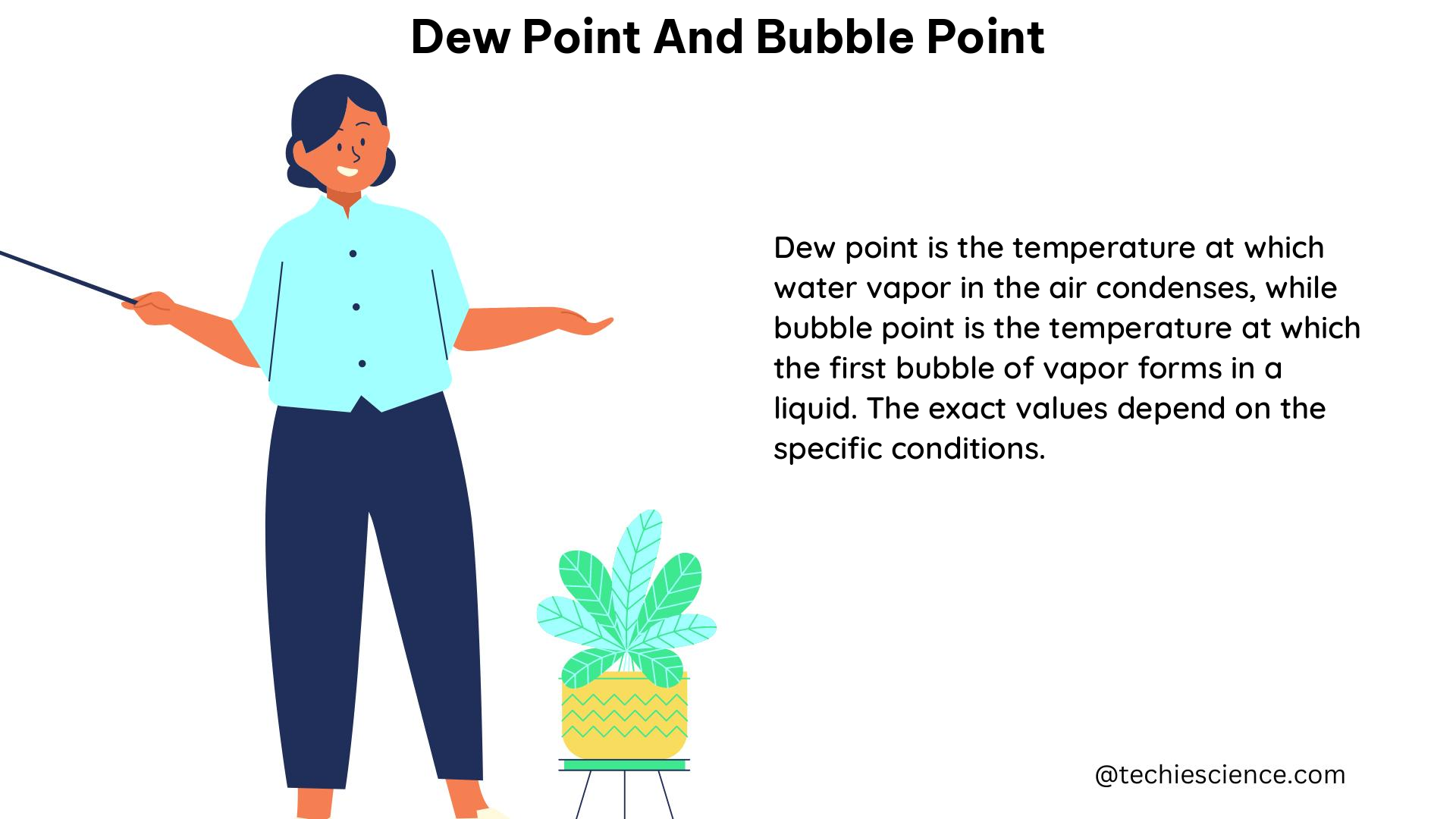Dew point and bubble point are fundamental concepts in thermodynamics and fluid mechanics, crucial for understanding phase transitions and the behavior of refrigeration systems. These parameters play a vital role in various industries, including HVAC, meteorology, and process engineering. In this comprehensive guide, we will delve into the technical details, formulas, and practical applications of dew point and bubble point, providing a valuable resource for physics students.
Understanding Dew Point
Dew point is the temperature at which a gas, typically water vapor, begins to condense into a liquid when the gas is cooled. At a given temperature, there is a maximum amount of water vapor that the air can hold before it reaches its dew point and condensation occurs. The dew point temperature is an essential measurement in various applications, as it helps determine the moisture content in the air and the potential for condensation formation.
The Antoine Equation and Dew Point Calculation
The relationship between dew point, temperature, and pressure is described by the Antoine equation, a semi-empirical formula used to estimate the vapor pressure of a pure component at a given temperature. The Antoine equation is expressed as:
log10(P) = A - (B / (C + T))
where:
– P is the vapor pressure (in appropriate units)
– T is the temperature in Kelvin
– A, B, and C are component-specific constants
To calculate the dew point, you can rearrange the Antoine equation to solve for the temperature T when the vapor pressure P is known, typically the saturation vapor pressure of the gas at the given conditions.
Dew Point in Refrigeration Systems
In the context of zeotropic refrigerants, the dew point occurs at a higher temperature during the condensation process compared to the bubble point during boiling. This is because the temperature difference between the refrigerant and the surrounding environment is greater during condensation than during boiling. This temperature difference drives the phase change process, with the dew point occurring at a higher temperature when the refrigerant is condensing.
Understanding Bubble Point

Bubble point, on the other hand, is the temperature at which a liquid begins to vaporize when it is heated. It is the highest temperature at which a liquid and its vapor can coexist in equilibrium. The bubble point pressure is the pressure at which the liquid begins to boil, and it is an essential measurement in the design and operation of distillation columns and other separation processes.
The Antoine Equation and Bubble Point Calculation
Similar to the dew point, the bubble point can be calculated using the Antoine equation. In this case, you would need to rearrange the equation to solve for the temperature T when the vapor pressure P is known, typically the saturation vapor pressure of the liquid at the given conditions.
Bubble Point in Refrigeration Systems
In the context of zeotropic refrigerants, the bubble point occurs at a lower temperature during the boiling process compared to the dew point during condensation. This is because the temperature difference between the refrigerant and the surrounding environment is greater during condensation than during boiling. This temperature difference drives the phase change process, with the bubble point occurring at a lower temperature when the refrigerant is boiling.
Hysteresis Effects in Nanopores
The bubble point and dew point of hydrocarbons in nanopores exhibit hysteresis effects, meaning that the bubble point and dew point curves do not overlap. This phenomenon is due to the pore structure and surface chemistry of nanopores, which can significantly affect the phase behavior of hydrocarbons.
Calculating Dew Point and Bubble Point using Aspen HYSYS
Aspen HYSYS, a widely used process simulation software, provides tools for calculating both dew point and bubble point. The Peng-Robinson equation of state or other thermodynamic models available in the software can be used to determine these important parameters.
Practical Applications and Importance
Dew point and bubble point are crucial measurements in various industries, including:
- HVAC: Dew point is used to determine the moisture content in the air and the potential for condensation, which is essential for the design and operation of HVAC systems.
- Meteorology: Dew point is a key parameter in weather forecasting and understanding atmospheric conditions.
- Process Engineering: Bubble point and dew point are important in the design and operation of distillation columns, evaporators, and other separation processes.
- Refrigeration Systems: The temperature difference between the bubble point and dew point of zeotropic refrigerants is a crucial factor in the performance and efficiency of refrigeration systems.
Conclusion
Dew point and bubble point are fundamental concepts in thermodynamics and fluid mechanics, with far-reaching applications in various industries. By understanding the technical details, formulas, and practical implications of these parameters, physics students can gain a deeper understanding of phase transitions and the behavior of complex systems. This comprehensive guide provides a valuable resource for students to explore the intricacies of dew point and bubble point, equipping them with the knowledge to tackle real-world problems and advance their studies in the field of physics.
References
- Can someone help me understand bubble point and dew point?
- Bubble/dew point and hysteresis of hydrocarbons in nanopores from molecular perspective
- Calculating Bubble Point and Dew Point using Aspen HYSYS
I am Sakshi Sharma, I have completed my post-graduation in applied physics. I like to explore in different areas and article writing is one of them. In my articles, I try to present physics in most understanding manner for the readers.